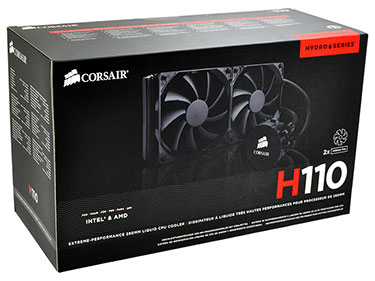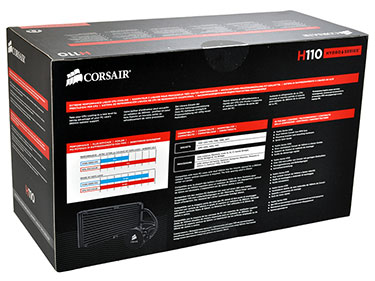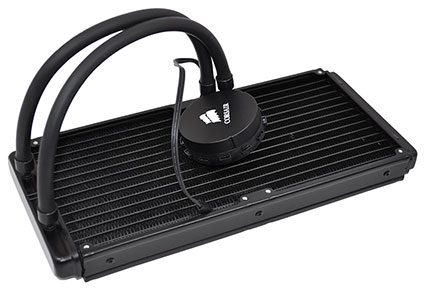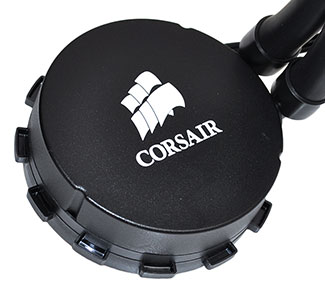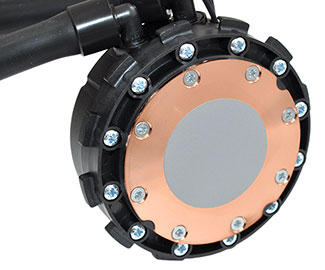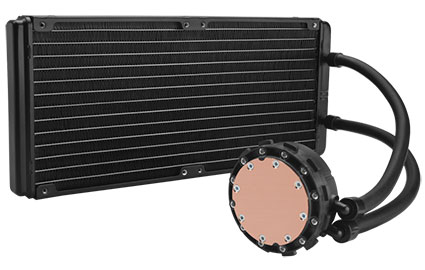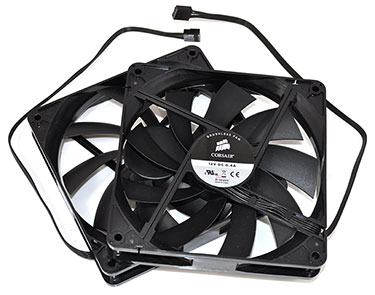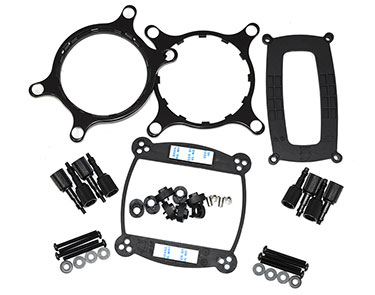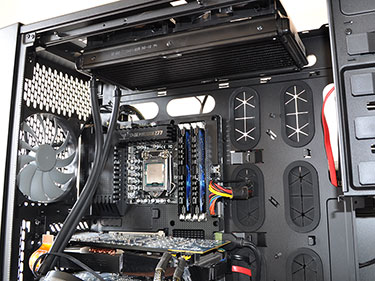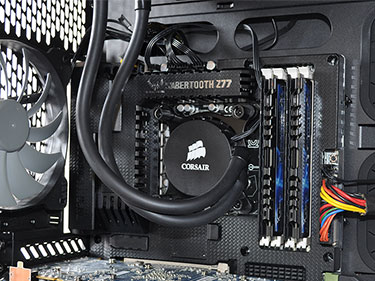Introduction
Corsair's high-end Hydro Series H100i is still fresh in the minds of many an enthusiast, but it didn't stay at the top of the company's portfolio for long. That mantle now belongs to the bigger, better-performing Hydro Series H110.
Introduced as Corsair's largest all-in-one solution to date, the H110 carries a £95 price tag (just £5 more than a H100i) and forgoes various bells and whistles in favour of optimal top-line performance. It is, essentially, a large 280mm aluminium radiator hooked up to a low-profile pump via a pair of flexible rubber hoses.
Sounds simple enough, but as with all radiators, the size increase shouldn't be underestimated. Measuring in at 140mm x 312mm x 29mm, this is Corsair's largest single radiator and the increase in surface area provides greater cooling potential, as well as the ability to accommodate large fans; in this case a pair of 140mm blowers that promise high static pressure and low noise.
Readers familiar with AiO liquid coolers may already recognise the H110, and for good reason; it's the same reference design as NZXT's Kraken X60. Both coolers are sourced from one ODM - in this case Asetek - but there are a few subtle differences. NZXT's variant incorporates a backlit LED pump cap and digital fan control, while Corsair's has the edge in terms of value and warranty - the H110 is £25 cheaper than the X60, and comes backed by a five-year warranty as opposed to NZXT's standard two-year cover.
The cost saving alone should be enough to swing consumers in Corsair's direction, we feel, but the competition arguably isn't from other 280mm radiators, it's from Corsair's award-winning 240mm Hydro Series H100i. Sure, the H100i has a smaller 240mm radiator, but it costs slightly less and packs Corsair Link integration, allowing users to monitor and control hardware variables through a bundled software package.
If you like to play with your toys the Hydro H100i offers greater customisation and is in that regard the better gadget. Yet the H110 will appeal to the purists; there are no flashy LEDs, no potential software issues and very little cable clutter. It's aim, quite simply, is to offer top-of-the-range liquid cooling performance in a single pre-filled and sealed unit.
Everything you need to get started on any current Intel or AMD socket is included in the box, and a neat layer of thermal paste is pre-applied to the pump's copper contact plate. Of course, the H110's main advantage over the H100i is its size, and that plus point is extended to the bundled 140mm fans - both of which should move more air without having to spin quite so fast. Looking at the numbers reveals that the H100i's 120mm fans run at speeds of up to 2,700RPM, whereas the H110's 140mm pairing is designed to run at a much quieter 1,500RPM without sacrificing performance.
Greater cooling potential and less noise is clearly the right way to go, but Corsair might have made the installation a bit easier. Don't get the wrong idea, the Hydro H110 is still extremely simple to configure, but it is a touch more involved than earlier Hydro Series offerings. The retention ring has to be assembled from 13 separate components, and though it's then a simple case of locking the pump to the backplate, we'd liked to have seen a few spare parts included as standard. As it is, there's no extra thermal compound for subsequent installations, there aren't any additional screws for users who want to add more fans in a push-pull configuration, and there's no splitter cable for the four-pin fans, so you will be losing three onboard headers (fan, fan, pump).
Our notion of what's big and what's not has changed since using Corsair's Obsidian Series 900D 'Super Tower' chassis. Motherboard clearance is a term that this enclosure is frankly unfamiliar with, and though the H110 is Corsair's largest radiator, it's made to look comparatively small in this beast of a chassis.
But not everyone will have quite so much room, and size constraints do require serious consideration. 280mm radiators typically need a chassis of a certain size, and they can complicate matters through irregular fan spacing. Corsair uses 20mm spacing - which it claims is common among three of the five top-selling 280mm radiators - whereas the rival NZXT Kraken X60 uses 15mm fan spacing. Either way, you need to be sure your chassis is compatible. Corsair publishes a compatibility table that details which of its own chassis are able to accommodate the H110, but users of third-party enclosures will need to check with the manufacturer.
Now for the main question: if you do have the room, is the H110 likely to offer better performance than the H100i? Only one way to find out.






